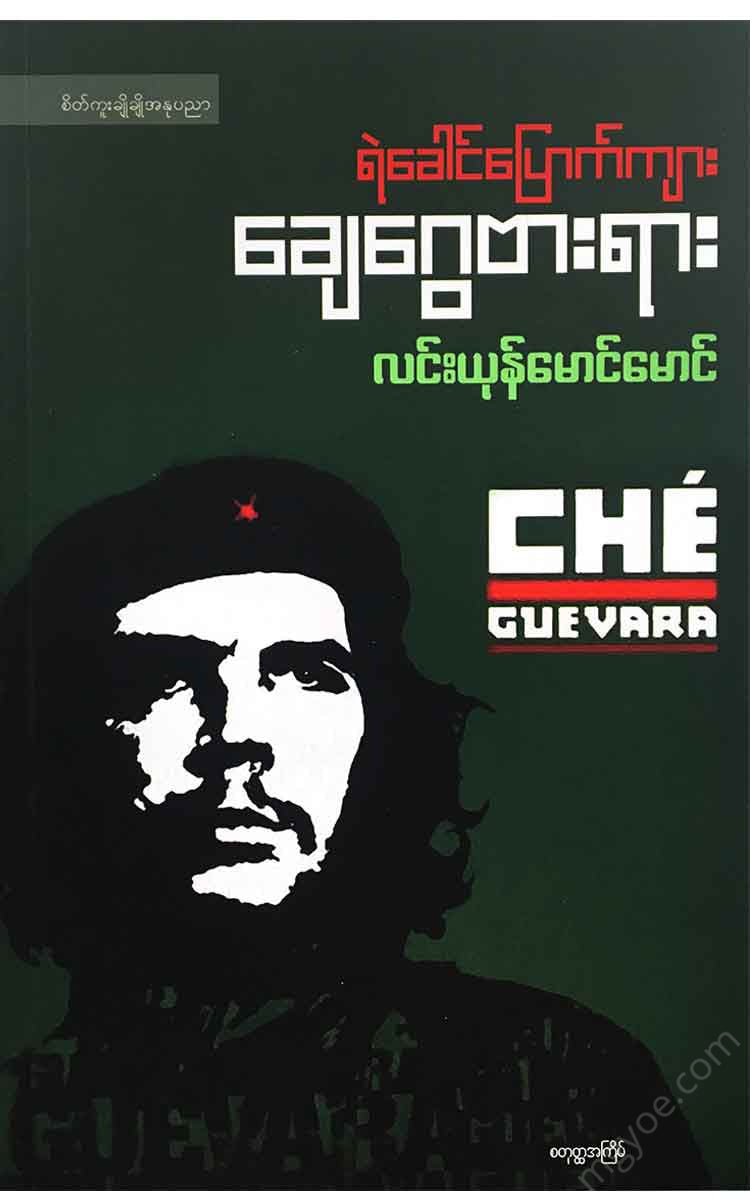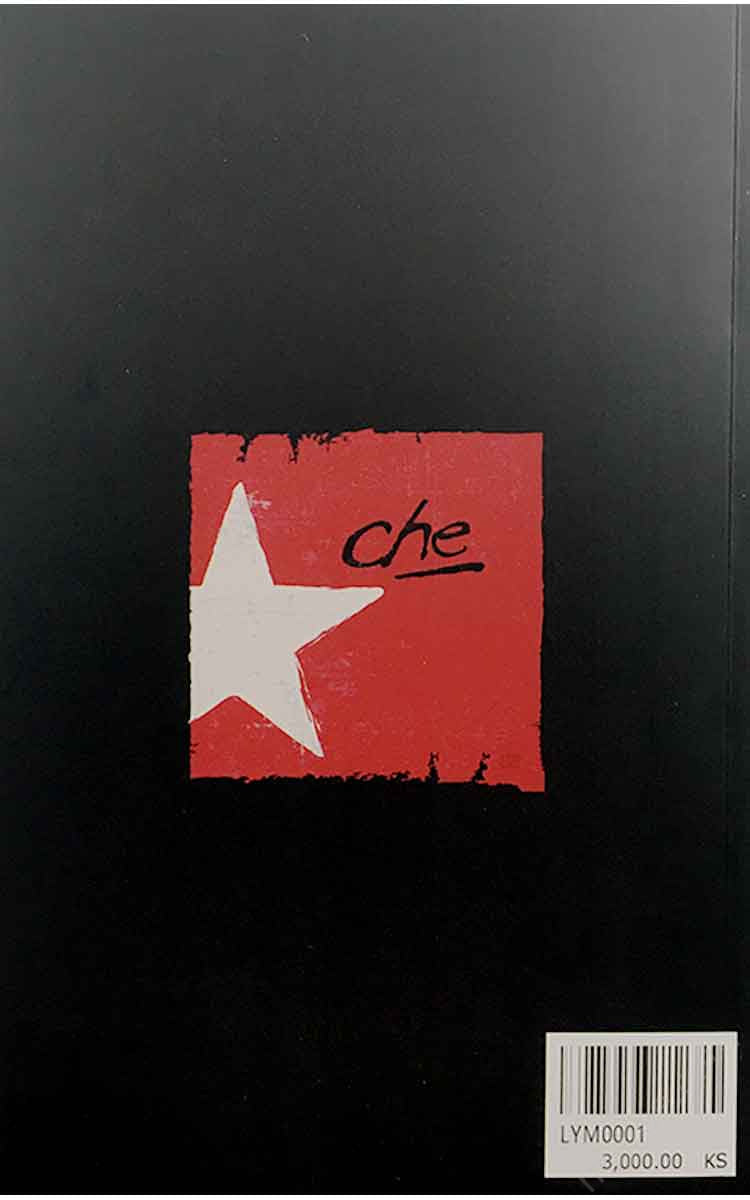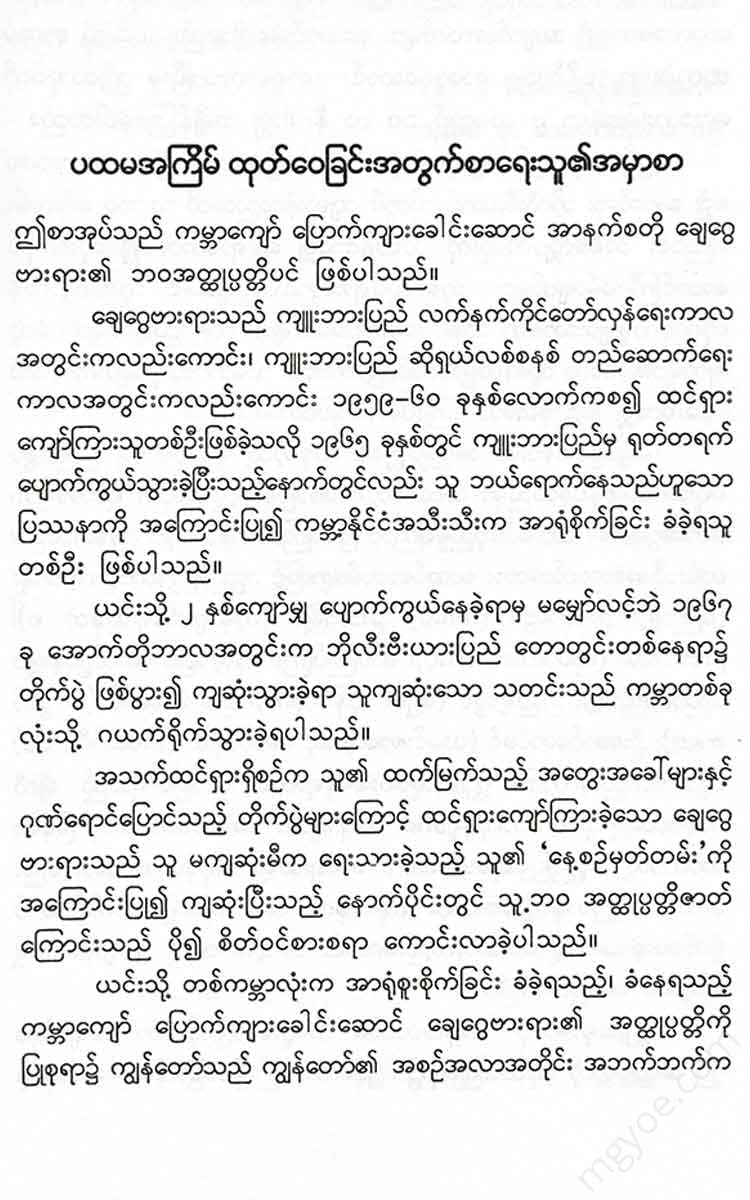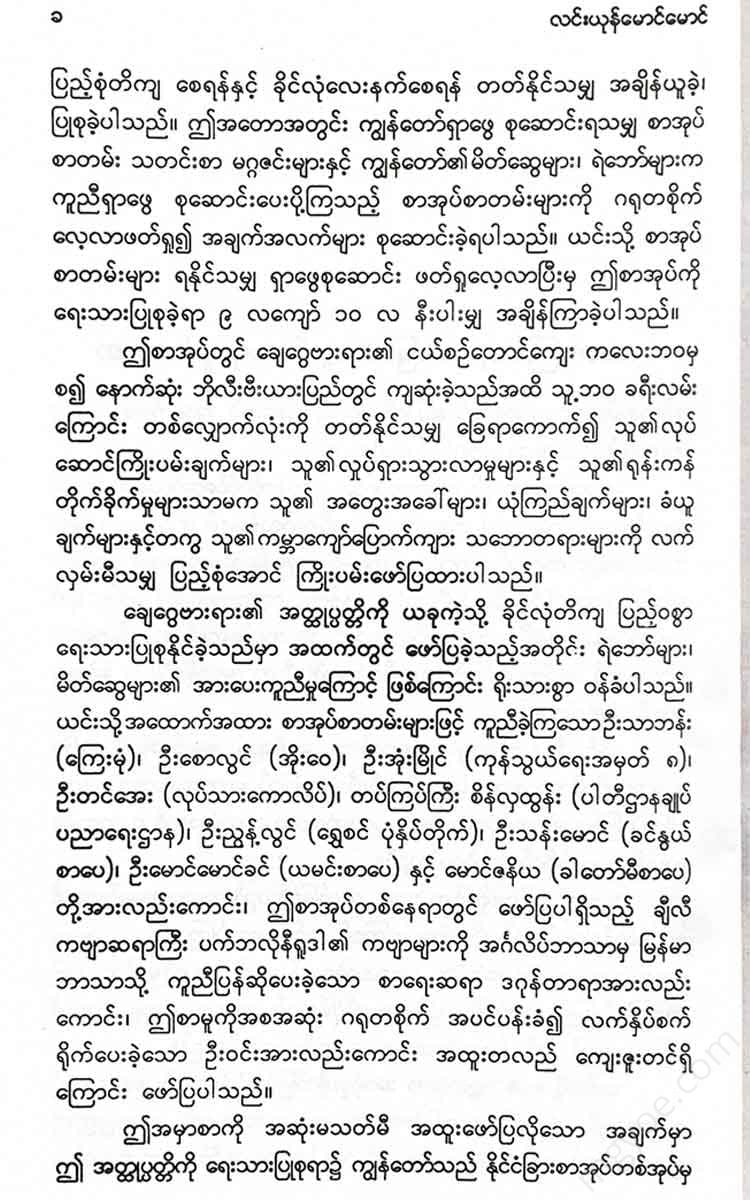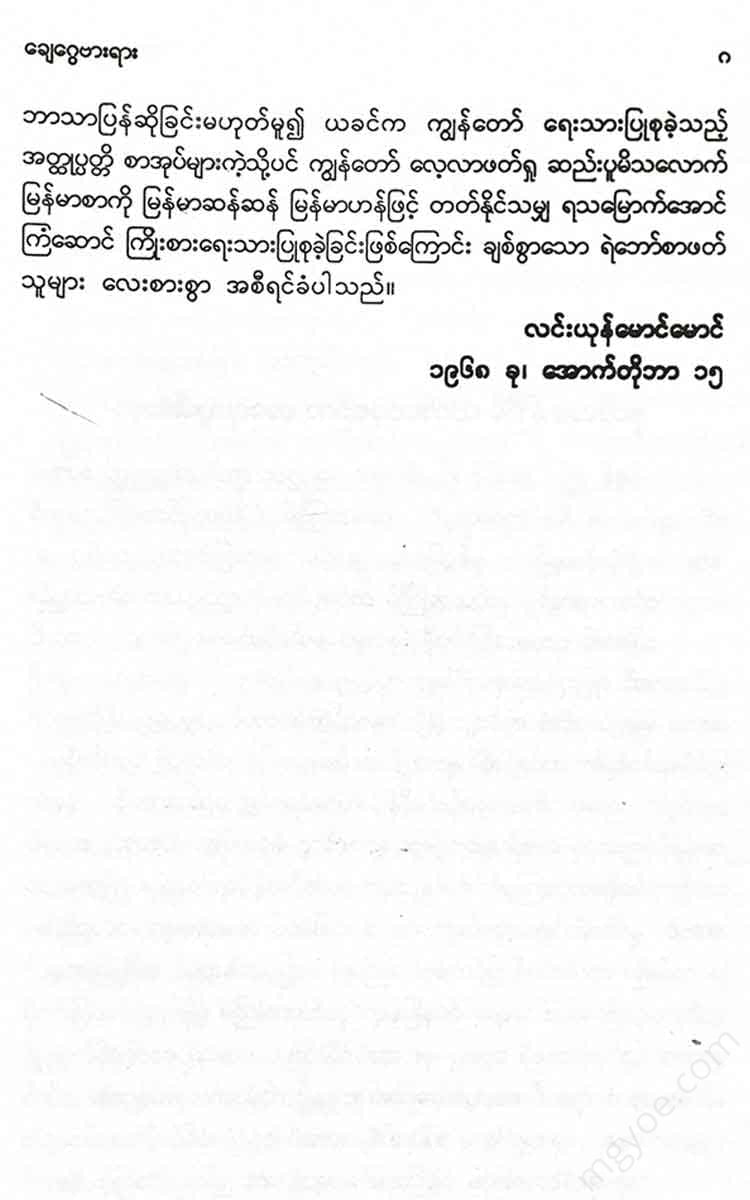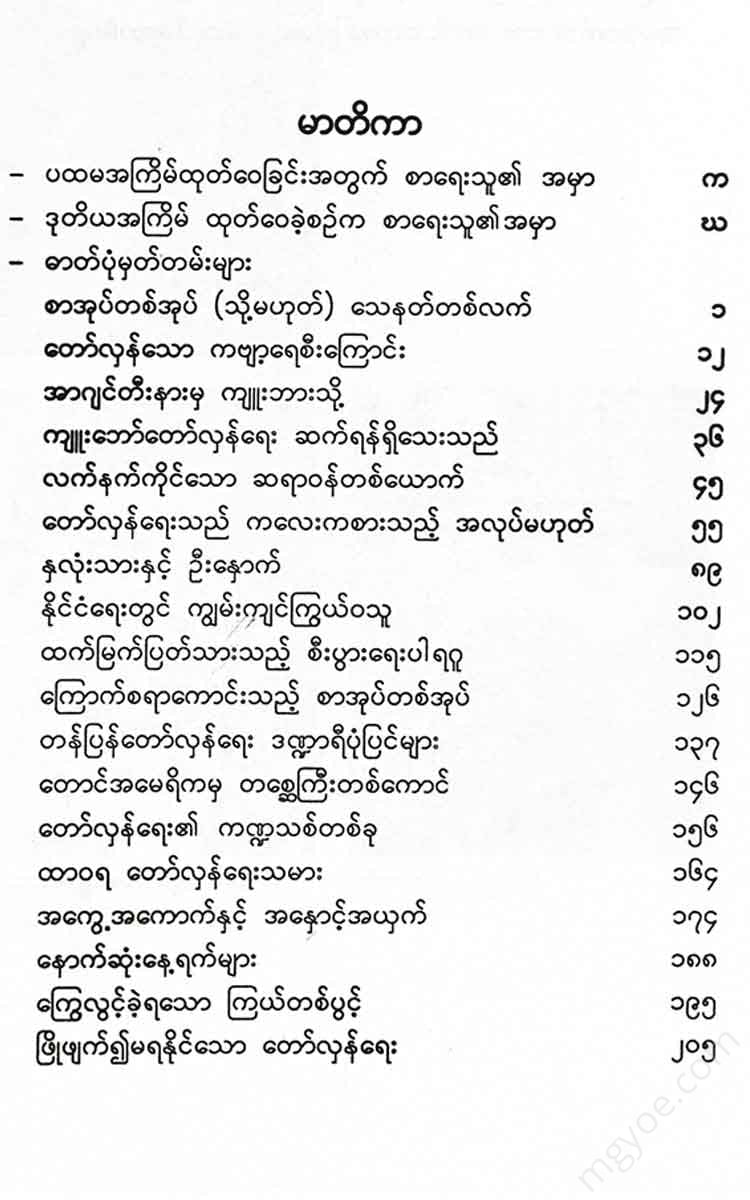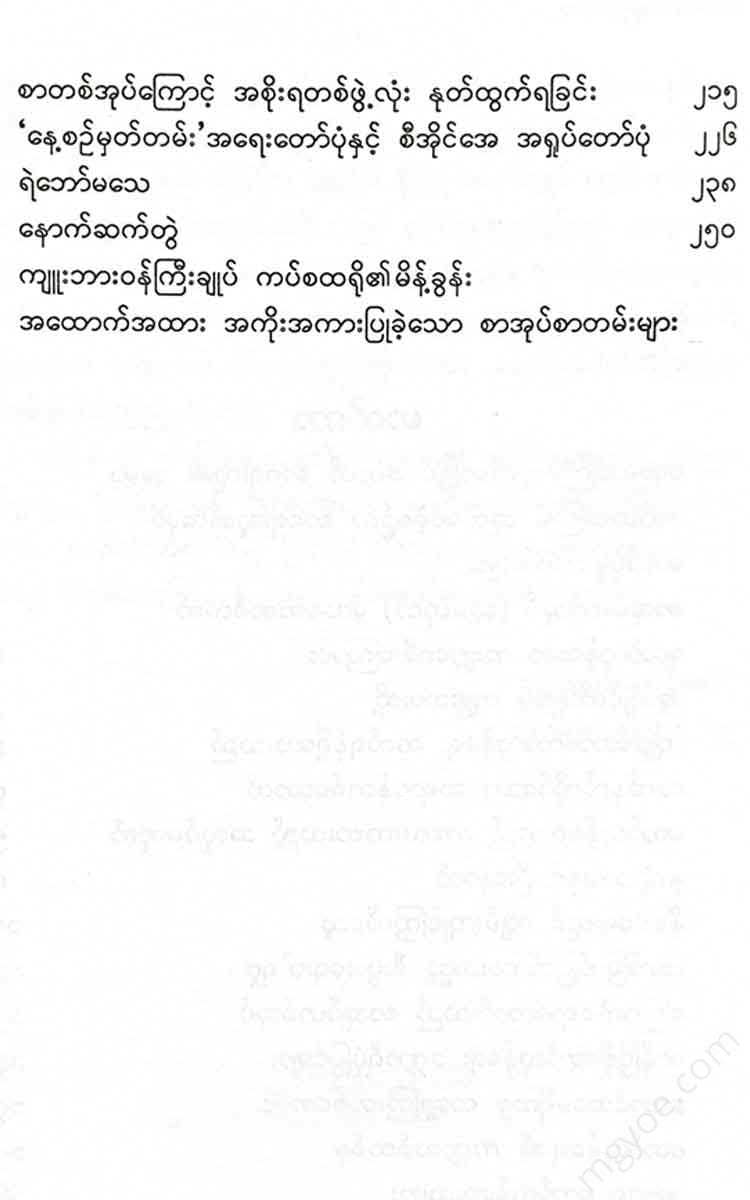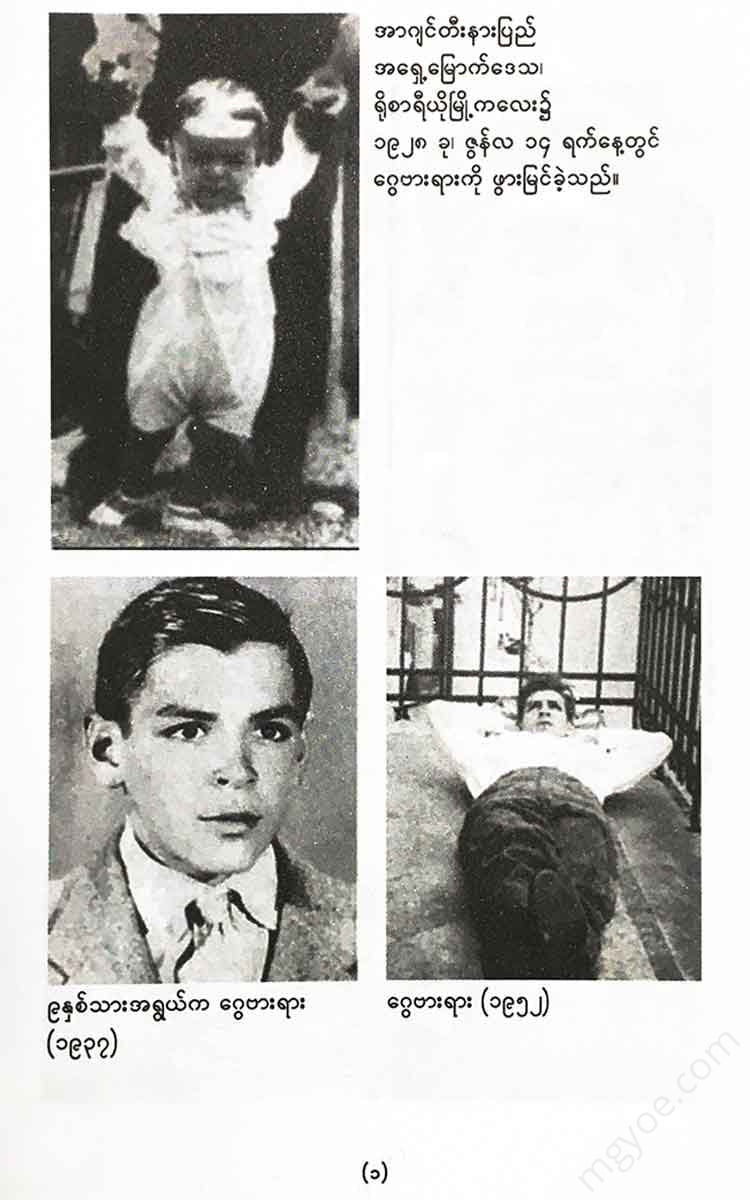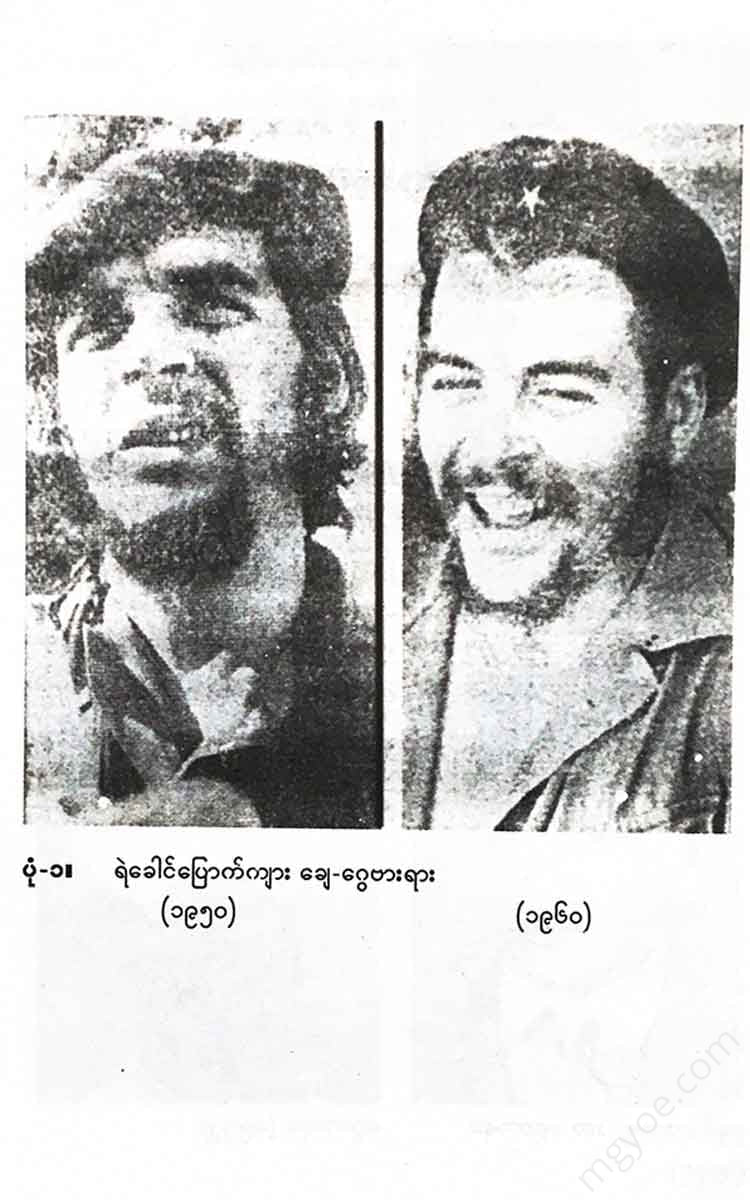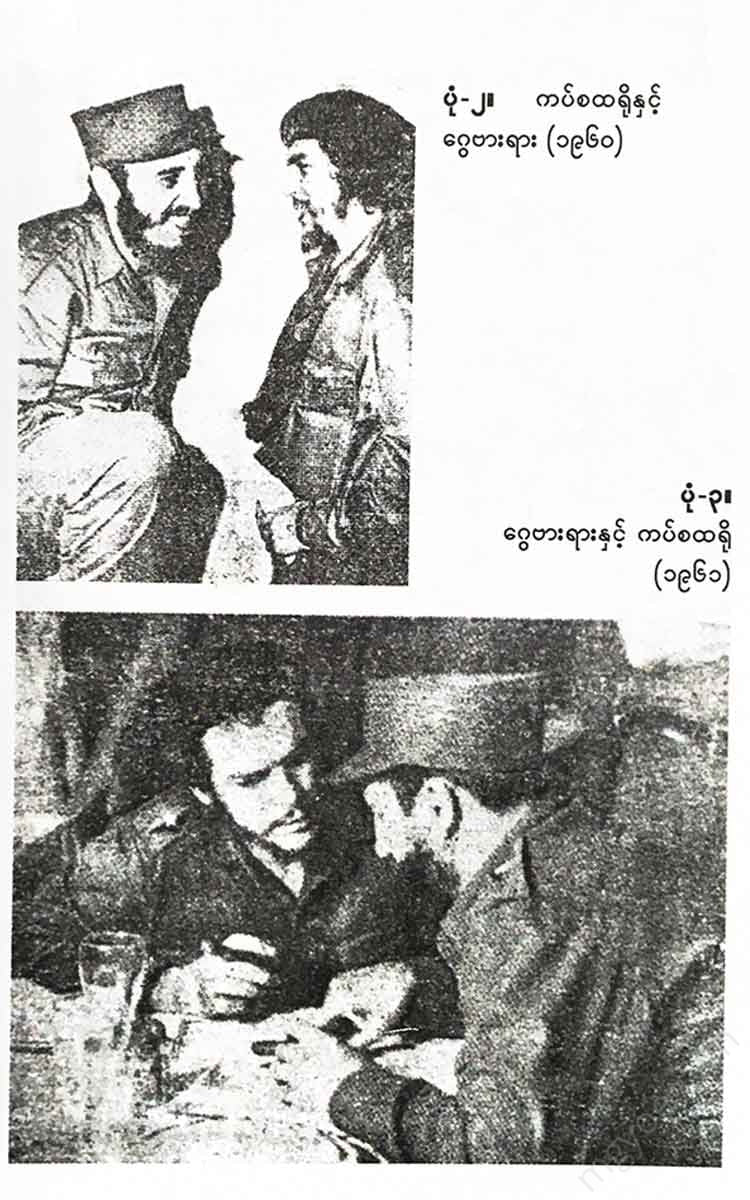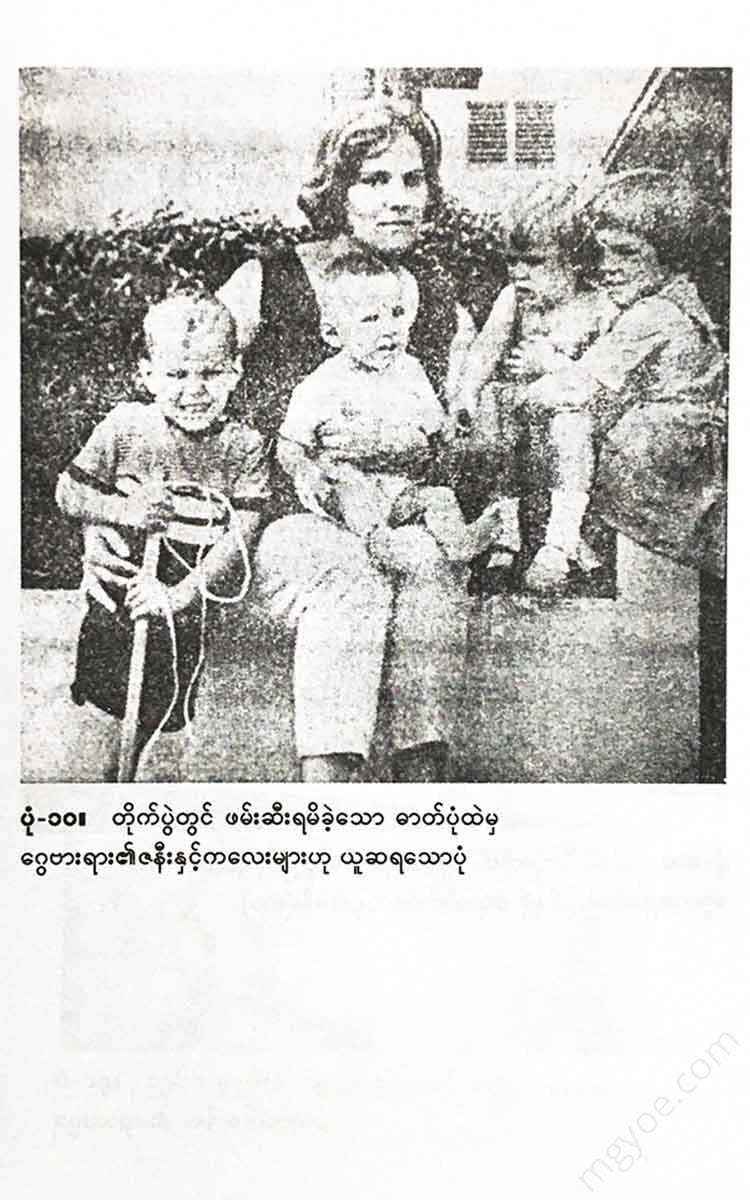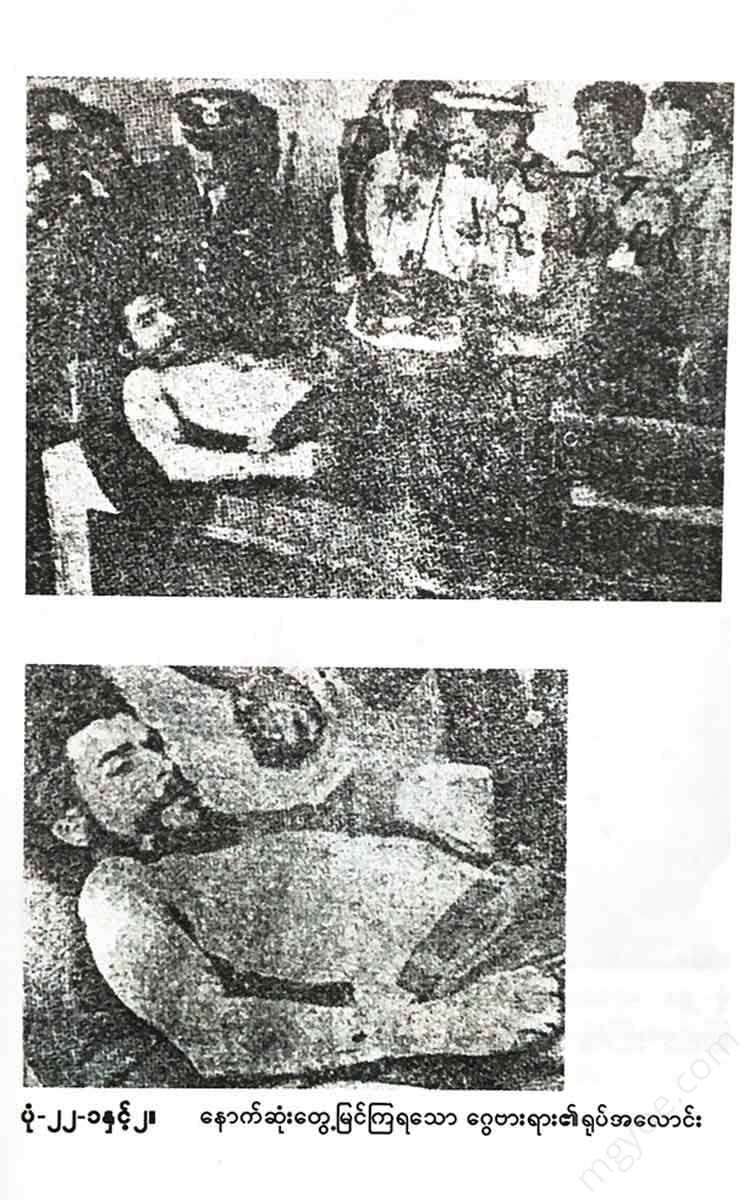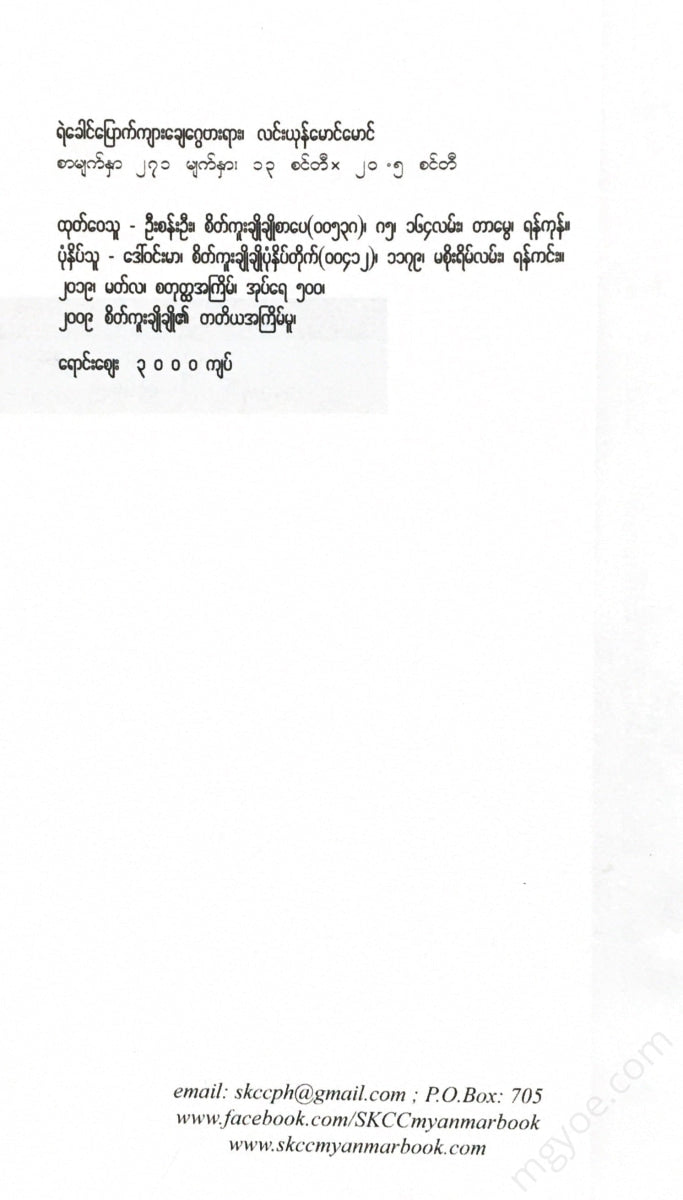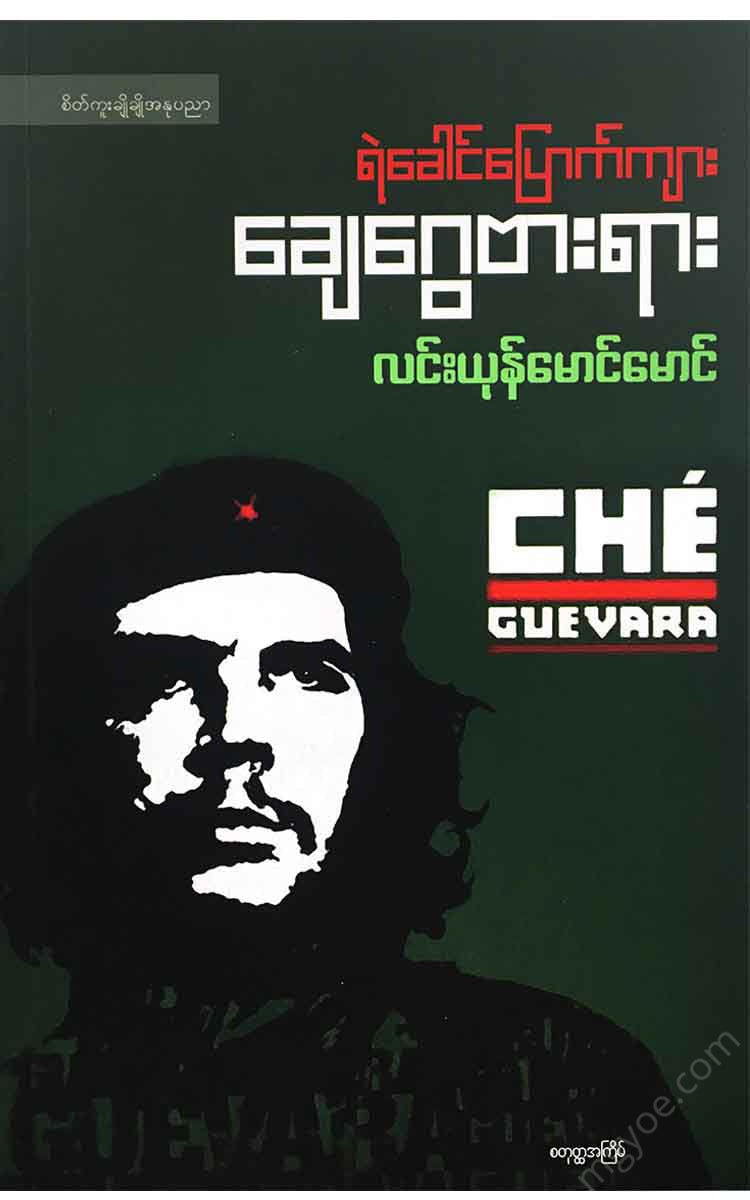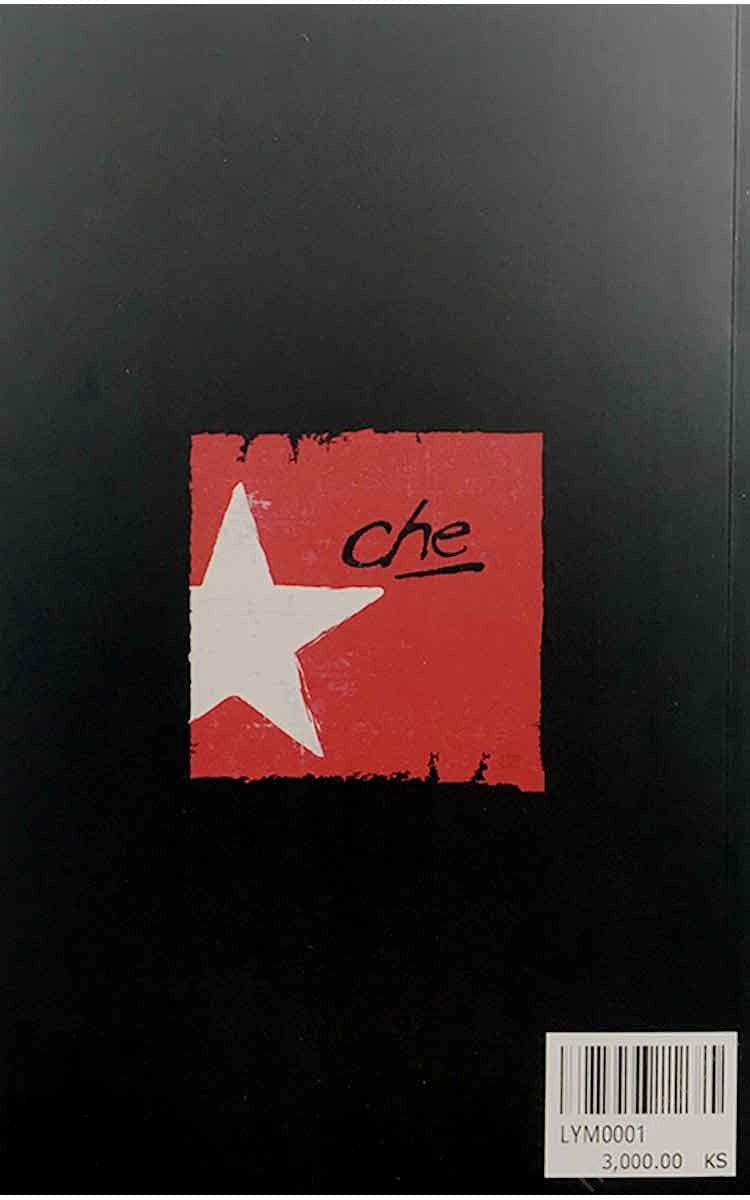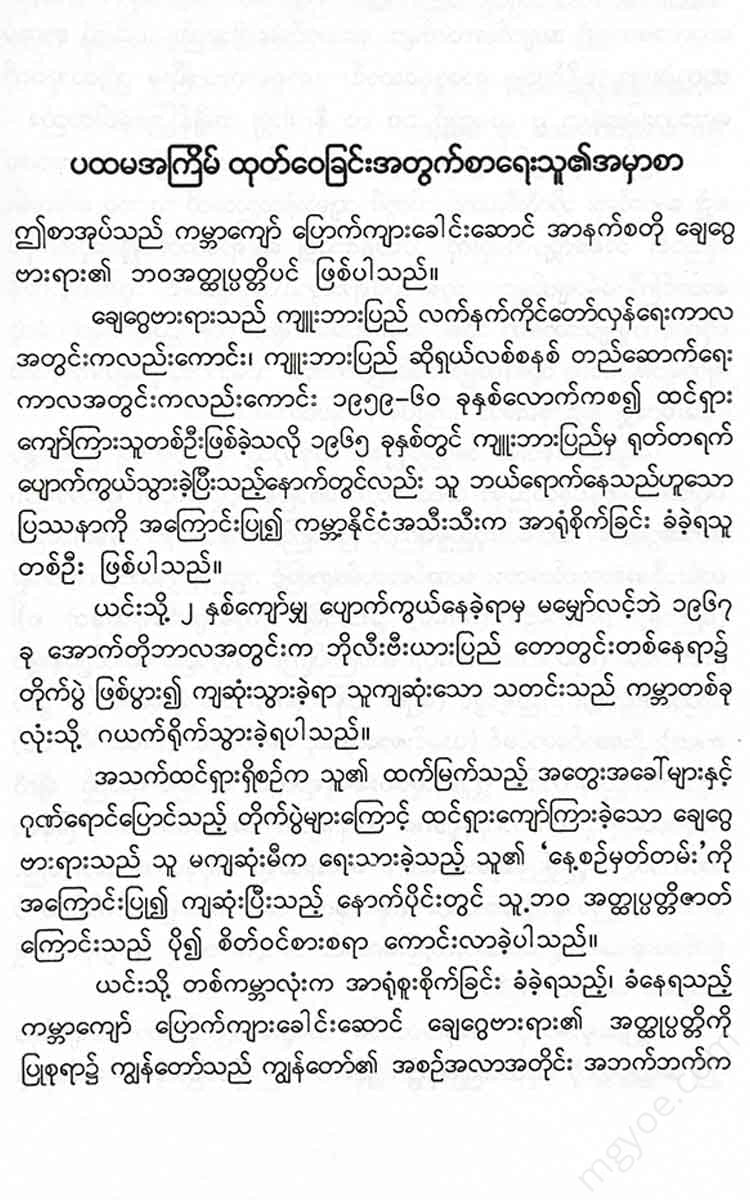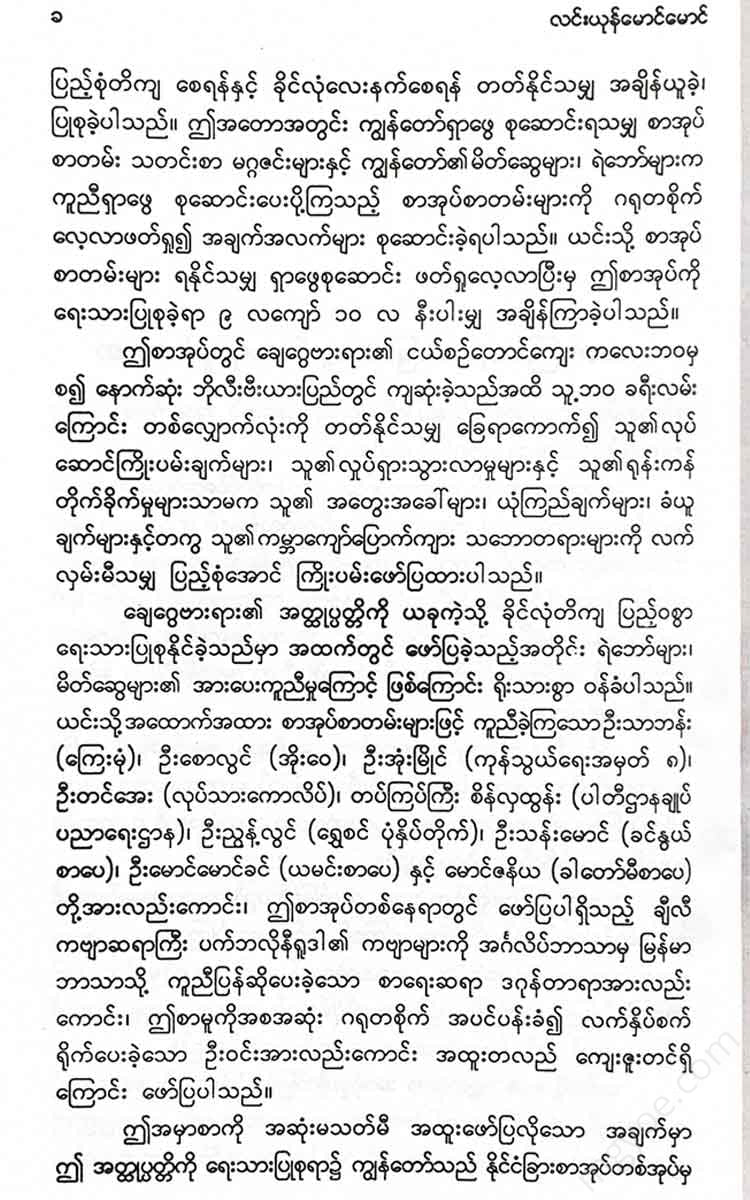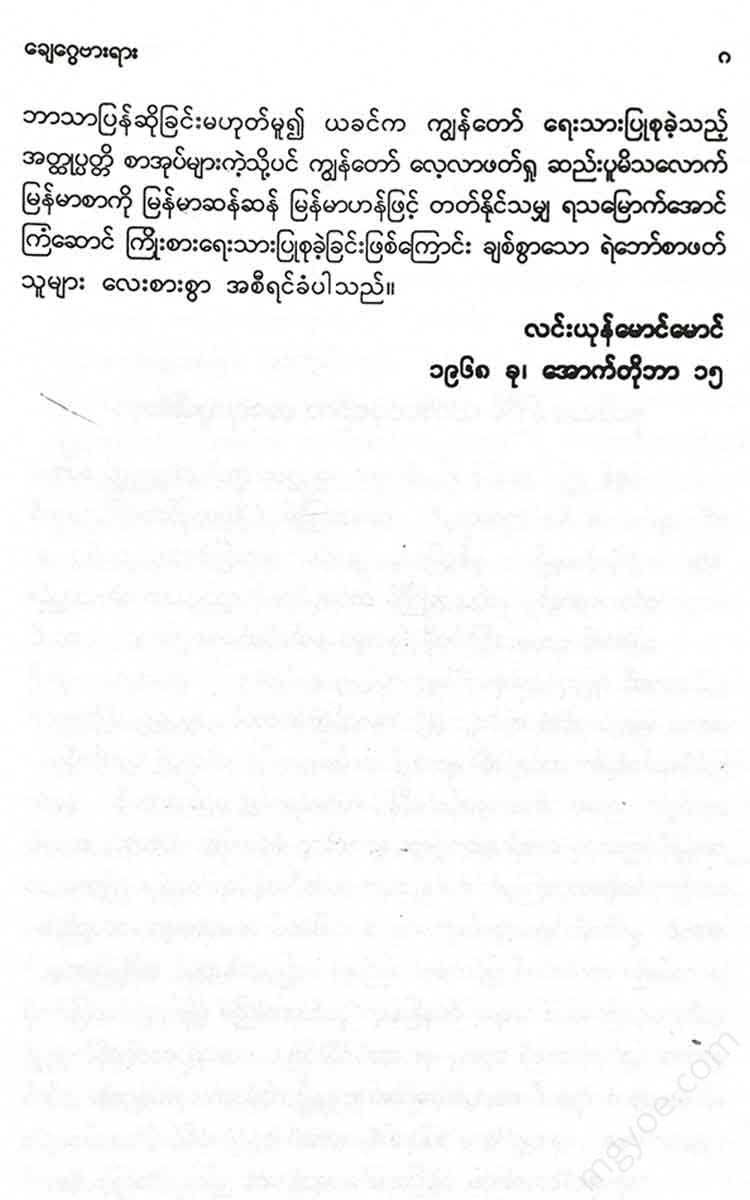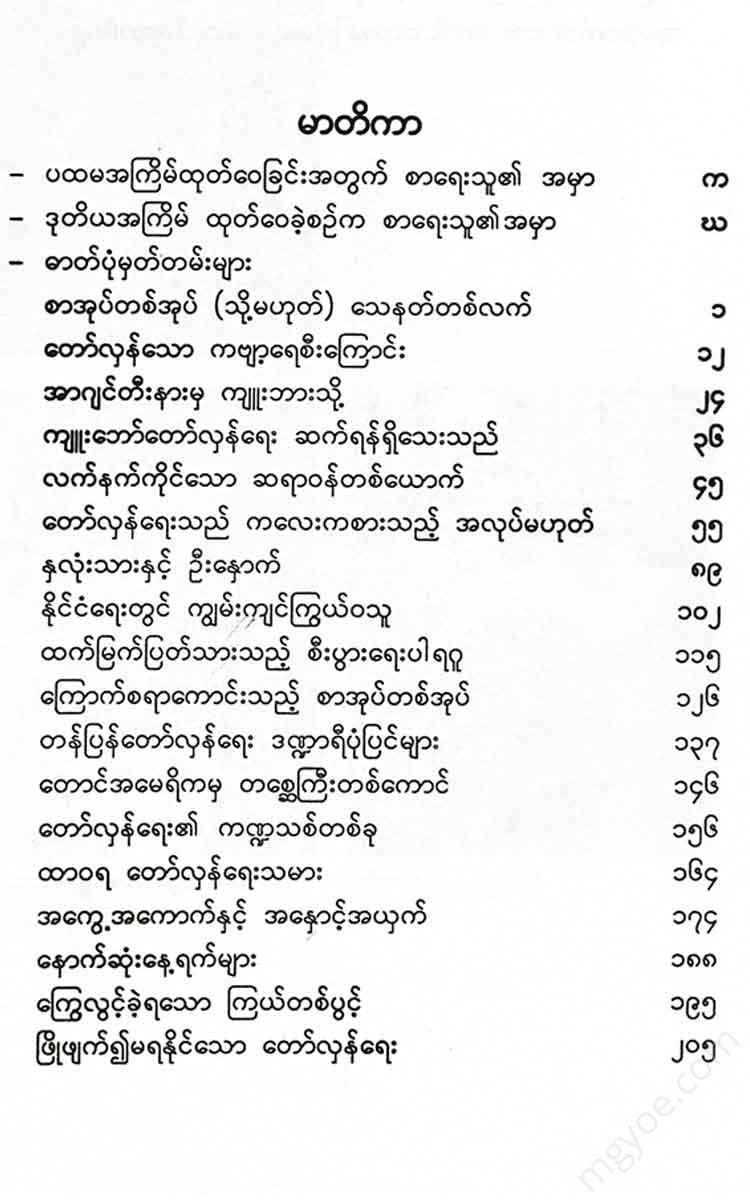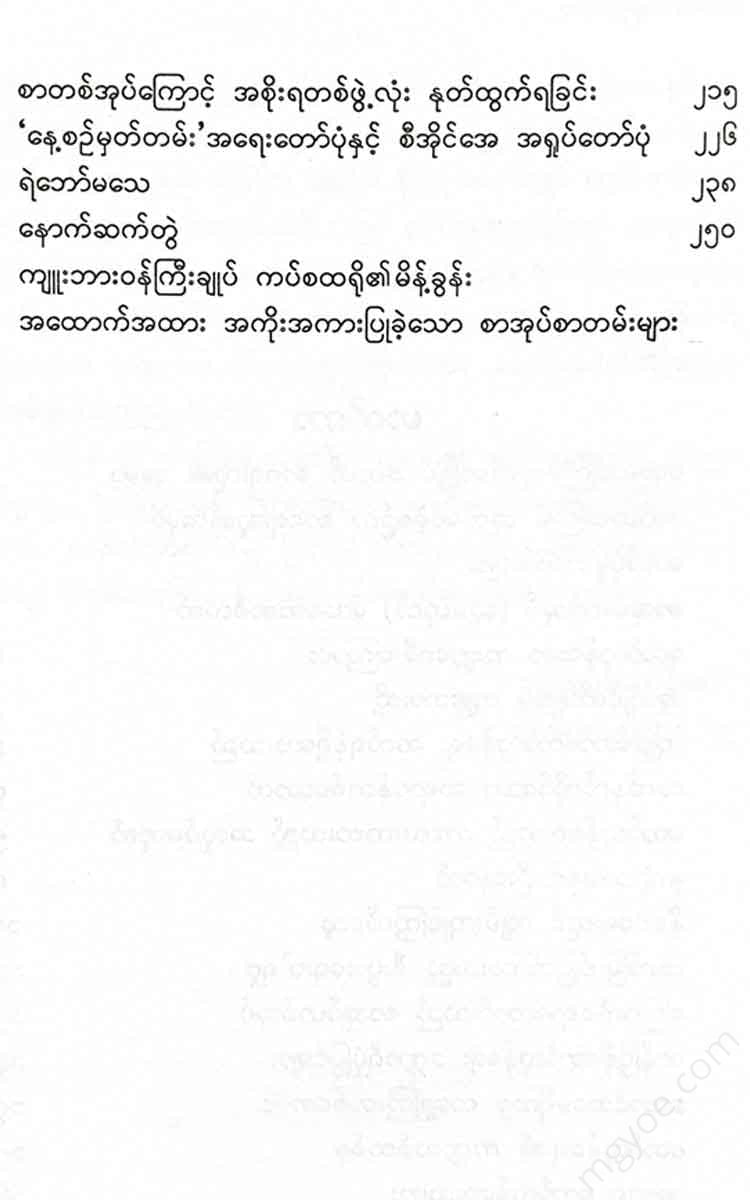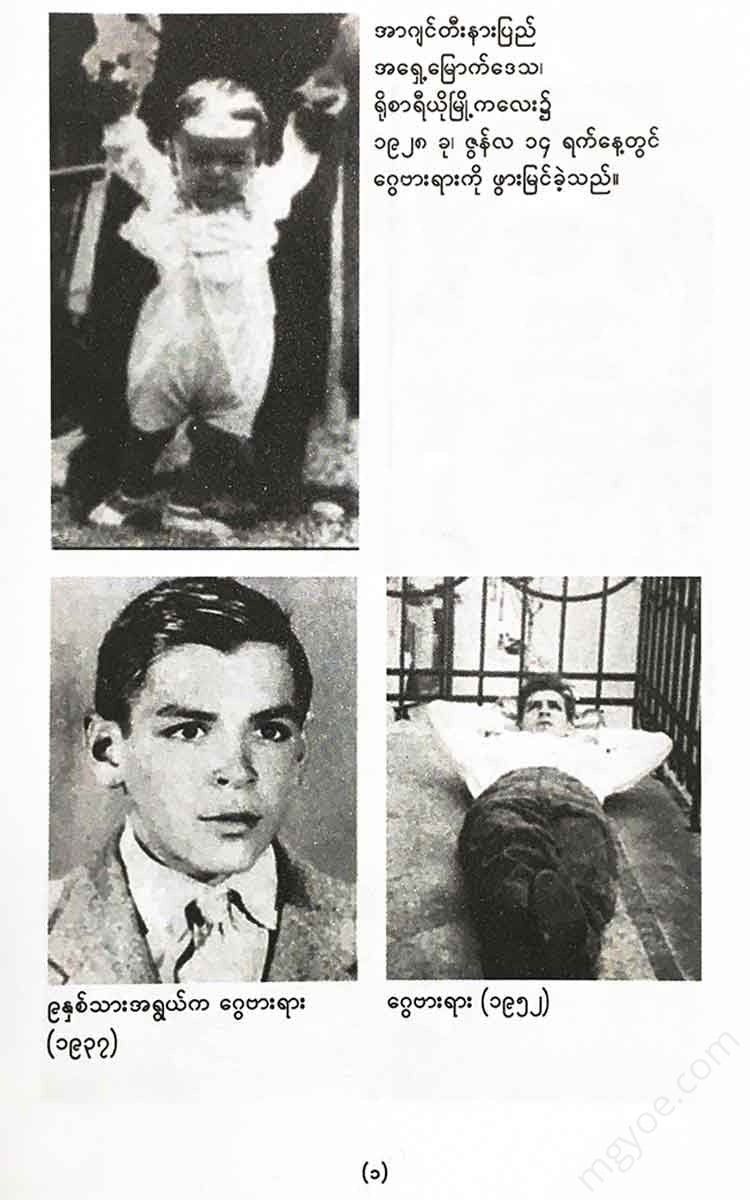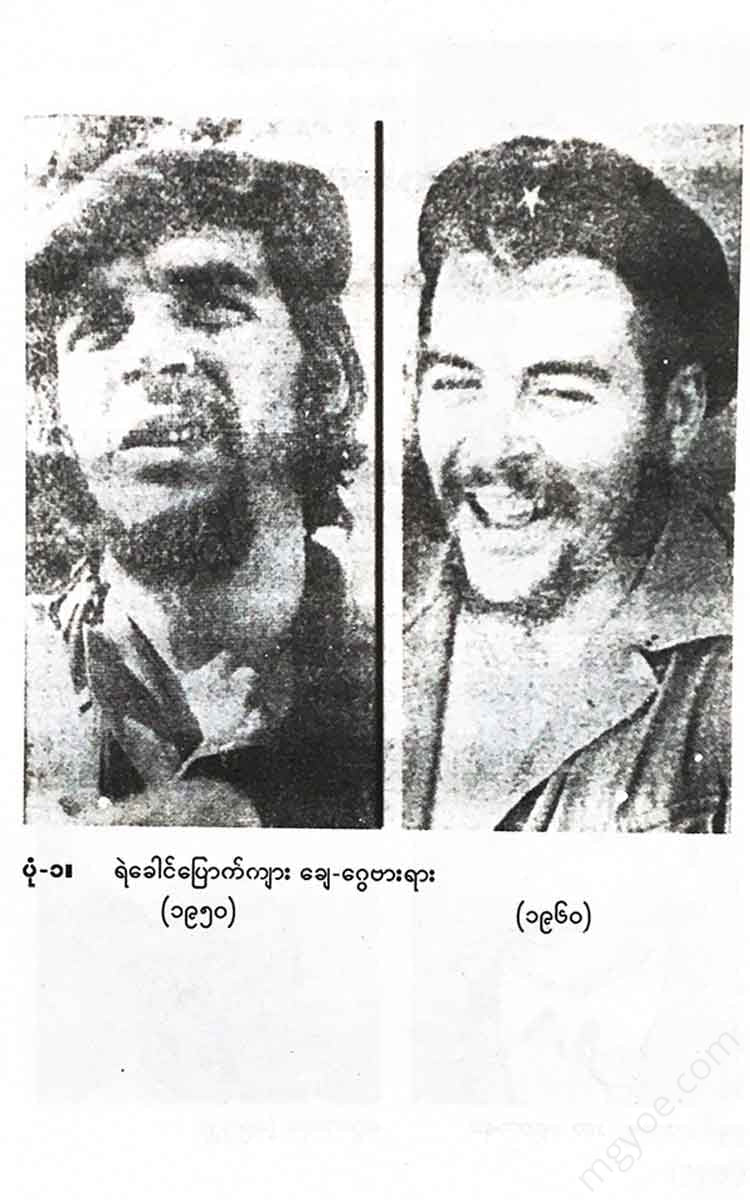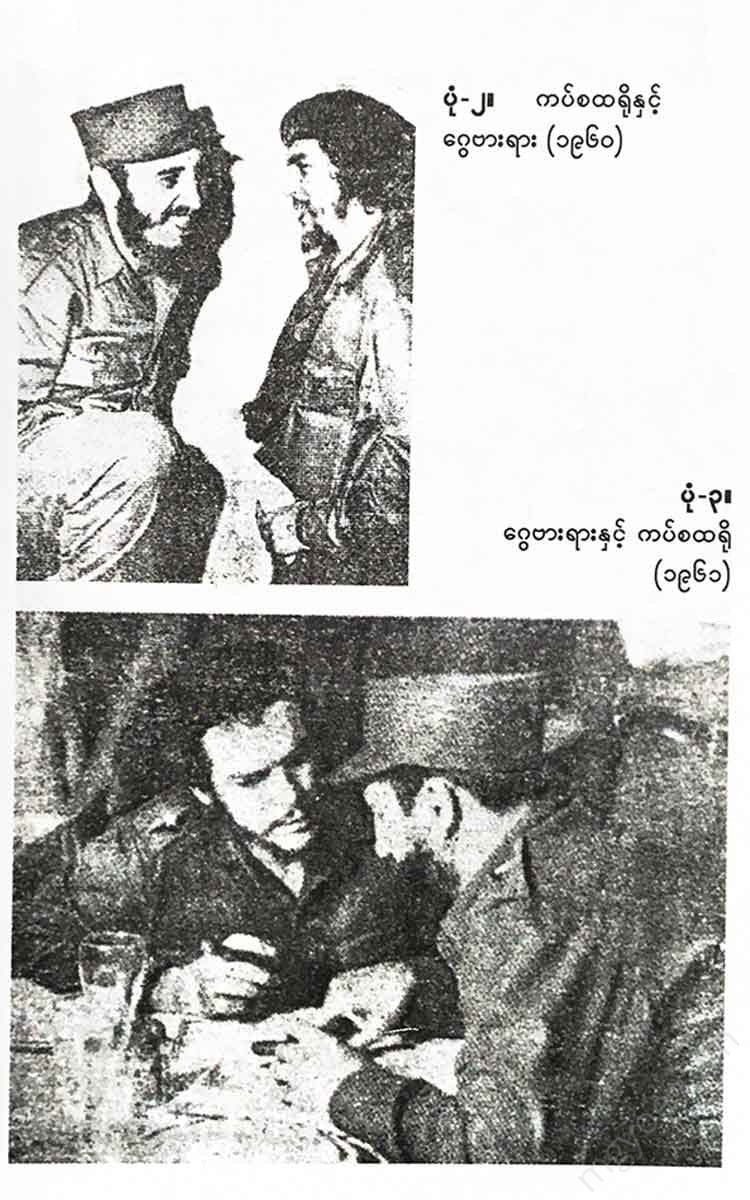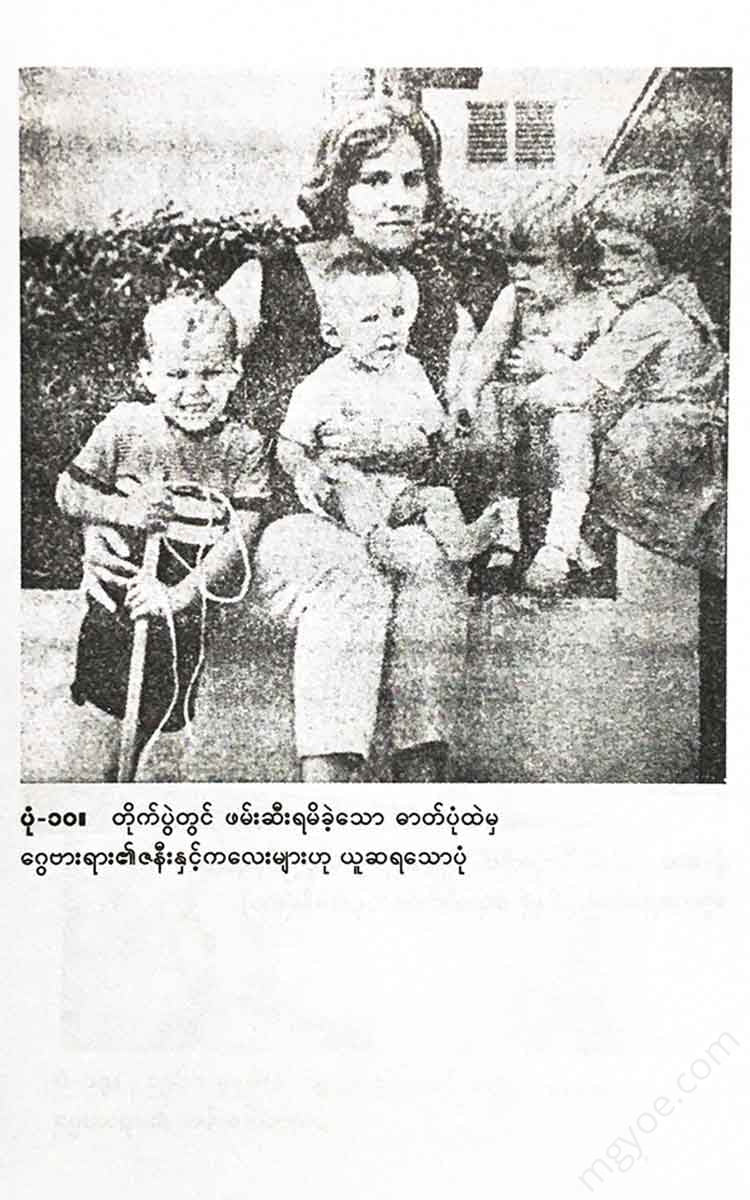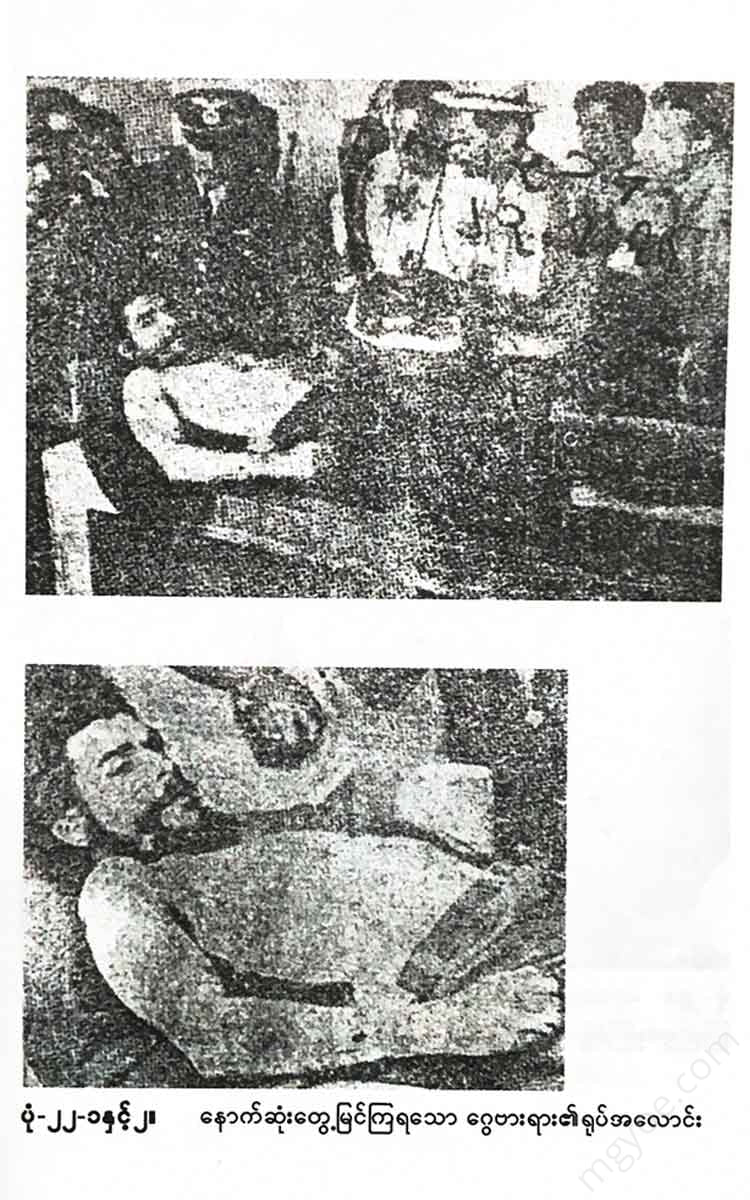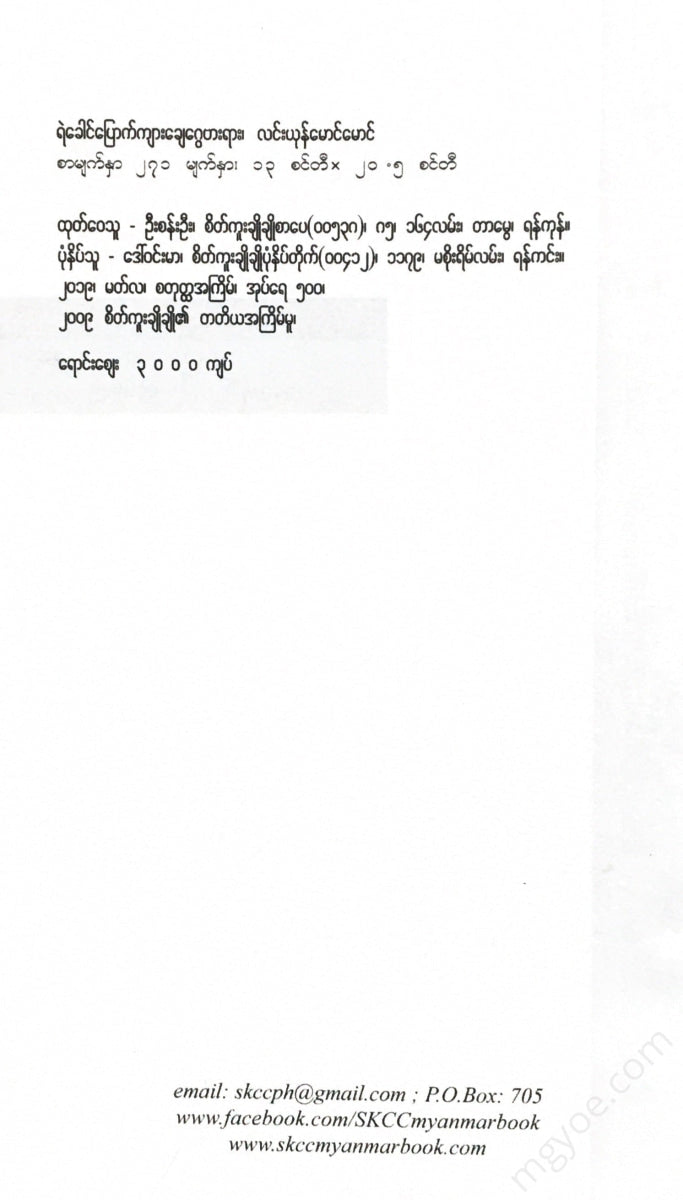စိတ်ကူးချိုချိုစာပေ
Eagle Maung Maung - Che Guevara, the guerrilla leader
Eagle Maung Maung - Che Guevara, the guerrilla leader
Couldn't load pickup availability
A book or
A gun
A blacksmith, with muscular arms and a muscular body, expertly pulled a large, red-hot iron bar from the crackling embers with a long, large pair of tongs. Then, placing the bar on his feet, he held it firmly with the tongs in his left hand, and lifted a large, sturdy hammer in his right hand, and struck it with great force.
The sound that emerged from the combination of the solidity of the solid base, the weight of the strong hammer, and the force of the powerful blacksmith's hand, these three elements resonated and shook the surrounding area, making it seem as if the earth itself was shaking.
After a while, the blacksmith threw the large iron bar, which seemed to be harder than it was before, into the hot coals.
In a moment, the embers crackled again. The iron ingot also turned bright red. As the heat gradually increased, it became so intense that it was too bright to be seen with the naked eye.
Once again, the blacksmith took the large piece of iron, which was extremely hot and red-hot, and once again pulled it with his tongs. Then, placing it on his feet, he struck it with the hammer as before, again and again, with great speed.
With each sound of the hammer, the iron bars and iron filings on the surface of the floor fell down, scattering like sparks and fireworks. The iron bars and iron filings on the floor became harder and harder.
As the embers were lit from time to time, and as they were repeatedly struck with a hammer, the iron ingot reached a state of perfection in terms of hardness, density, compactness, and strength. In short, it became a perfect steel.
If we consider the nature of this system, the example of this system, and study the course of world history, we will see that those who have always stood firm and resolutely at the forefront of the oppressed people, raising the banner of victory, are indeed the steel heroes and steel leaders who have been forged.
They were those who had been repeatedly “burned” in the violent movements, struggles and revolutions of the oppressed people. They were those who had been repeatedly forged in the brutal bloodletting, torture and oppression of the ruling class. In the end, they became steel heroes who, complete with a combination of hardness, density, compactness and firmness, fought the enemy fiercely without surrendering or lowering their flag.
Especially the great October Socialist Revolution of the workers and peasants of the Soviet Union, which occurred in the first half of the 20th century (1900-1950),
Whether during the revolution of 1917, during the long and fierce people's liberation and anti-imperialist struggle of the oppressed Chinese people, who numbered over 600 million at that time, (1924-49), or during the broad and profound anti-fascist Great Patriotic War (or World War II) (1939-45), in which all peoples, nations, and classes from all over the world participated, the people will be able to recognize and see such steel leaders and steel heroes who were forged in this way.
Just as many countries in the latter half of the 19th century produced such historic world leaders, in the latter half of the 1950s (or the second half of the 20th century) a figure emerged who was revered and honored by oppressed peoples and exploited classes around the world.
That person is no one else.
During the Cuban Revolution, which was as powerful as the country was small, it was a "fire" that came from time to time, and it became a "sword" in the national liberation and anti-imperialist struggles of Latin American countries many times. It was the eternal revolutionary, the steel guerrilla "Che Guevara", who stood firm and resolutely for the oppressed peoples of various countries, and did not give up or lower his flag, but fought the enemy as fiercely as the enemy.
His full name was Ernesto Che Guevara. The "Che" in this name was not his real name. It was a nickname he acquired as an adult. In his native Argentina, the word "Che" is used as a friendly term when speaking to someone without their name being called, or when they do not know their name, and is somewhat similar in meaning to "my own person."
The name Che Guevara would later become a beacon of light for the struggle against colonialism and national liberation, but when we look back at Che Guevara's childhood in the mountains more than thirty or forty years ago, we can only glimpse a vague and vague memory.
Che Guevara was a native of Argentina, a part of South America that geographers and historians have called the Western Hemisphere and the New World.
The Paraná River, which originates in the Mato Grosso Plateau, at an altitude of about 3,000 feet in the center of Brazil, the largest country in South America, flows through the center of Paraguay and flows rapidly to the northeast of Argentina, the second largest country in South America. After flowing for almost 2,000 miles, the exhausted Paraná River enters the city of Rosario, about a hundred miles upstream from Buenos Aires, the capital of Argentina, and, as if observing the surrounding landscape, it suddenly lowers its water level and flows into the South Atlantic Ocean.
If you were to look at it casually, you wouldn't see anything special about this little town of Rosario. It's just a second-class city with about half a million people living in the inner city and its suburbs. It's just an ordinary city, struggling from sunrise to sunset for a piece of ocean, trading and making a living with various businesses. It's just a modern city, bustling with workers, with sugar mills, flour mills and distilleries.
Thus, it can be said that there is nothing special to see in this small town, but there is still something special to show, something to talk about, something to record.
This field, this fact is nothing else. The iron-clad guerrilla "Che Guevara", who showed the way to march like a morning star from the red head in the future era of international anti-imperialist and national liberation struggles, was born on June 14, 1928, in the small town of Rosario, on the banks of the Paraná River in the northeastern region of Argentina.
Of the five children born to his parents, Che Guevara was the eldest.
It is questionable whether Che Guevara's growing up as a guerrilla fighter, constantly traveling the world to fight against colonialists and reactionary governments, was due to his genetic makeup. His mother, Celia Sana, was of Irish descent. Irishmen fought the British colonialists with violent weapons during World War I (1914-18) and were a part of the international revolution.
His father was Ernesto Guevara Lynch, who was of Argentine descent.
By the time Che Guevara was born, his father, Lynch, worked as an engineer, and their family was already a middle-class household, able to eat and drink comfortably.
Che Guevara was a very sickly and delicate child, raised by his parents as a worm. He suffered from frequent colds and coughs that were out of proportion to his age.
The parents, who had never seen Guevara, who had been a sickly, sickly child for days, with a great sense of parental love and compassion for their son, finally moved to the town of Alta Gracia, which was better suited for their eldest son's health.
The city of Rosario, where the family had previously lived, was located in the delta, and the weather was always humid and cold. As a result, the young Guevara was constantly suffering from colds and coughs. However, the town of Altagracia, where they had now moved, was a hill town, and the weather was warmer than Rosario. Especially the constant exposure to the warm sunlight, the contact with the dry land, and the view of the clear sky, were like drinking a glass of strong medicine for the asthmatic Guevara. Now he was breathing hard and feeling refreshed.
However, the asthma he had suffered from during his time in Rosario was so severe that after arriving in Gracia, Guevara's pain was significantly relieved, and he could not reach the point of death.
